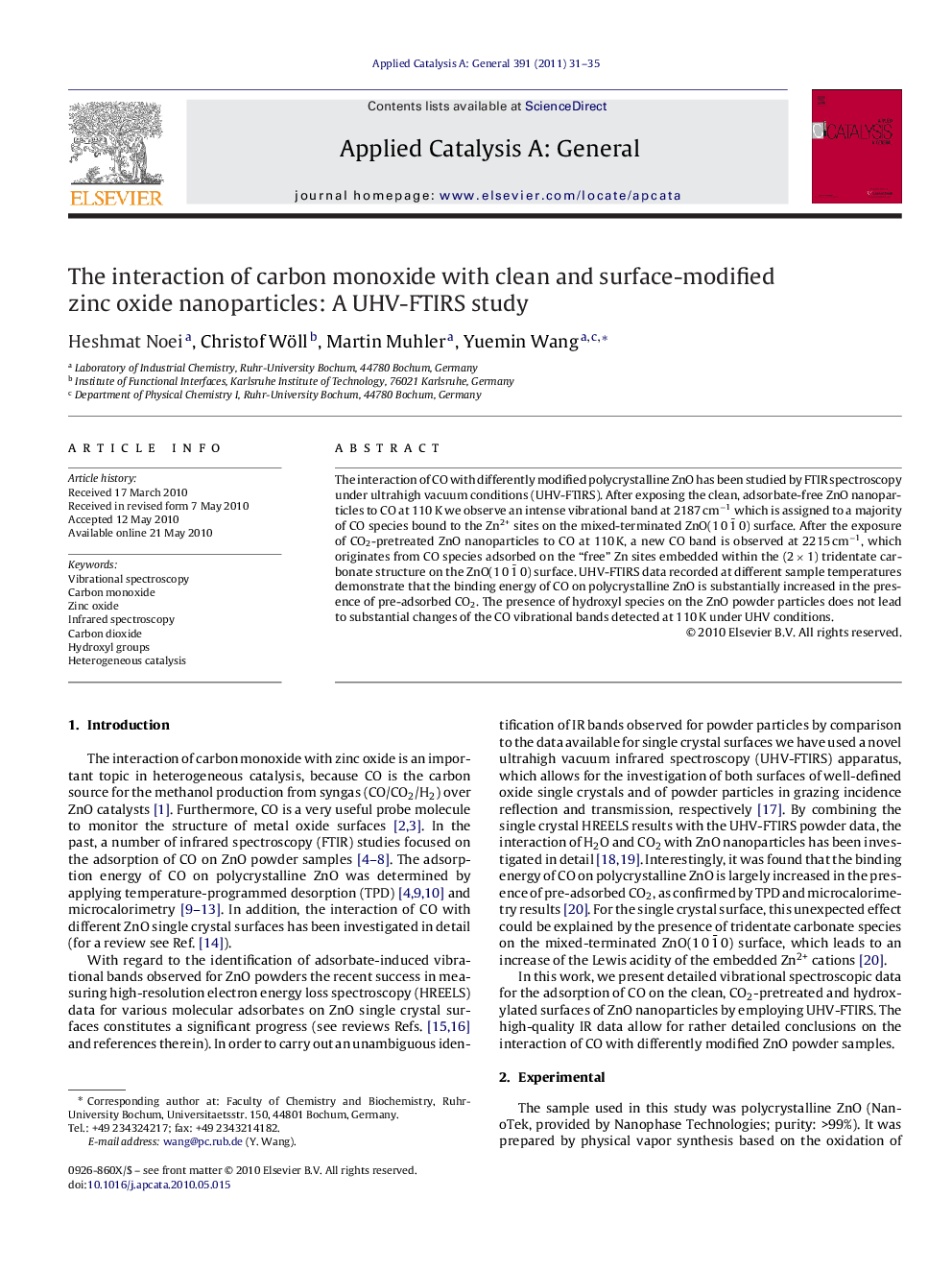| Article ID | Journal | Published Year | Pages | File Type |
|---|---|---|---|---|
| 41618 | Applied Catalysis A: General | 2011 | 5 Pages |
The interaction of CO with differently modified polycrystalline ZnO has been studied by FTIR spectroscopy under ultrahigh vacuum conditions (UHV-FTIRS). After exposing the clean, adsorbate-free ZnO nanoparticles to CO at 110 K we observe an intense vibrational band at 2187 cm−1 which is assigned to a majority of CO species bound to the Zn2+ sites on the mixed-terminated ZnO(1 0 1¯ 0) surface. After the exposure of CO2-pretreated ZnO nanoparticles to CO at 110 K, a new CO band is observed at 2215 cm−1, which originates from CO species adsorbed on the “free” Zn sites embedded within the (2 × 1) tridentate carbonate structure on the ZnO(1 0 1¯ 0) surface. UHV-FTIRS data recorded at different sample temperatures demonstrate that the binding energy of CO on polycrystalline ZnO is substantially increased in the presence of pre-adsorbed CO2. The presence of hydroxyl species on the ZnO powder particles does not lead to substantial changes of the CO vibrational bands detected at 110 K under UHV conditions.
Graphical abstractThe high-quality vibrational data recorded by UHV-FTIRS allow for detailed conclusions on the interaction of CO with differently modified polycrystalline ZnO surfaces. Importantly, the present study provides direct spectroscopic evidence that the binding energy of CO on ZnO nanoparticles is substantially increased in the presence of pre-adsorbed CO2.Figure optionsDownload full-size imageDownload high-quality image (209 K)Download as PowerPoint slide
